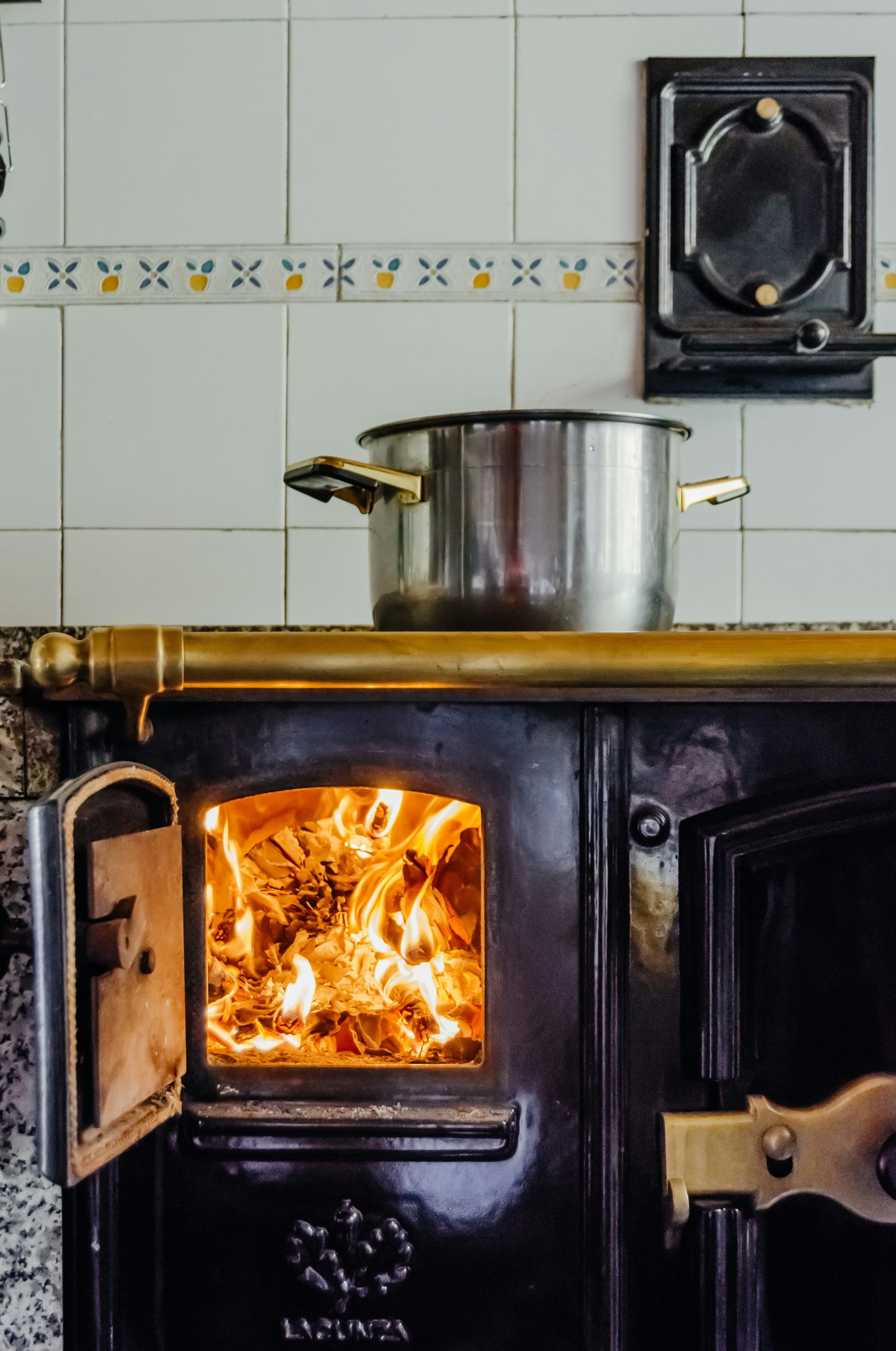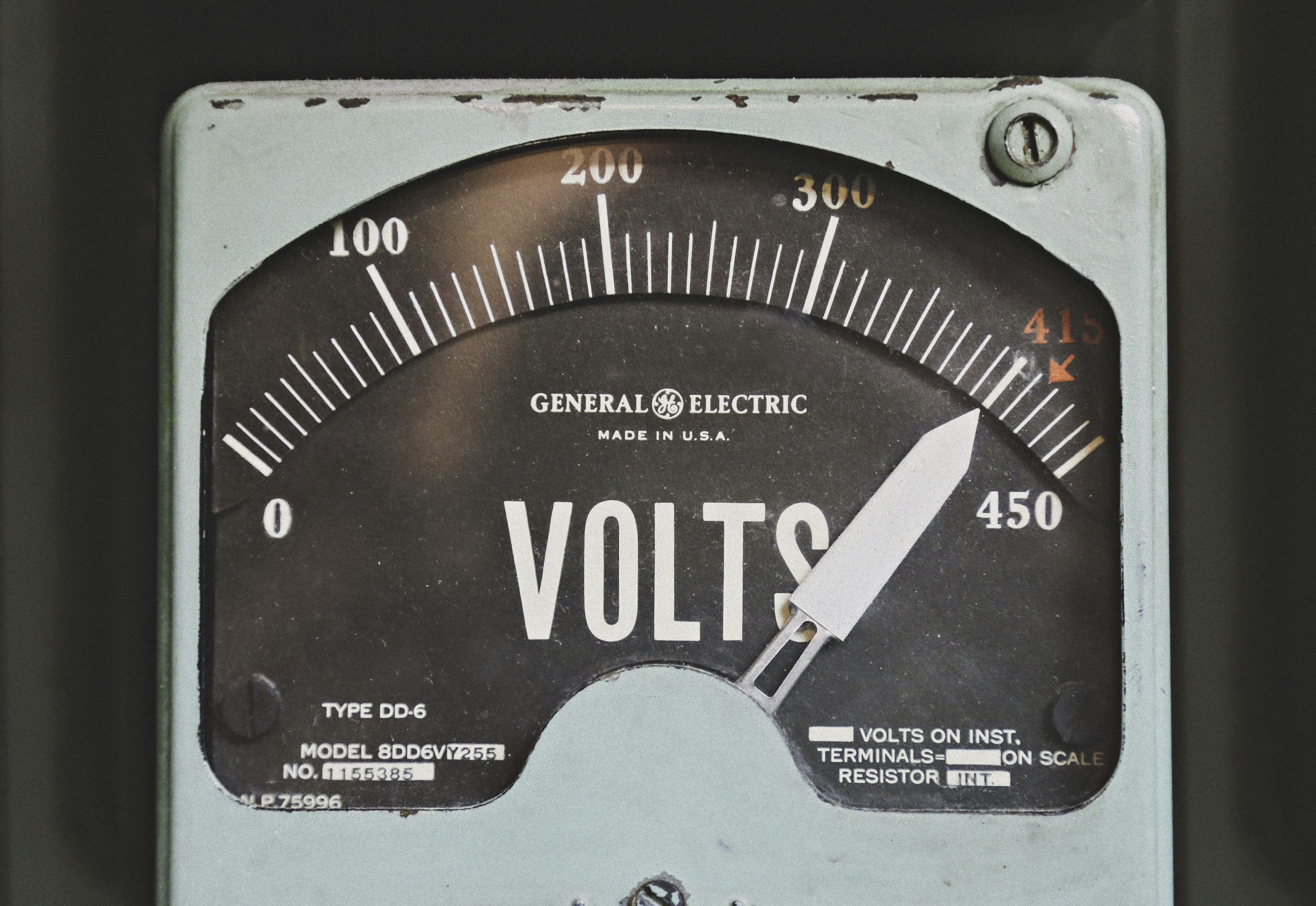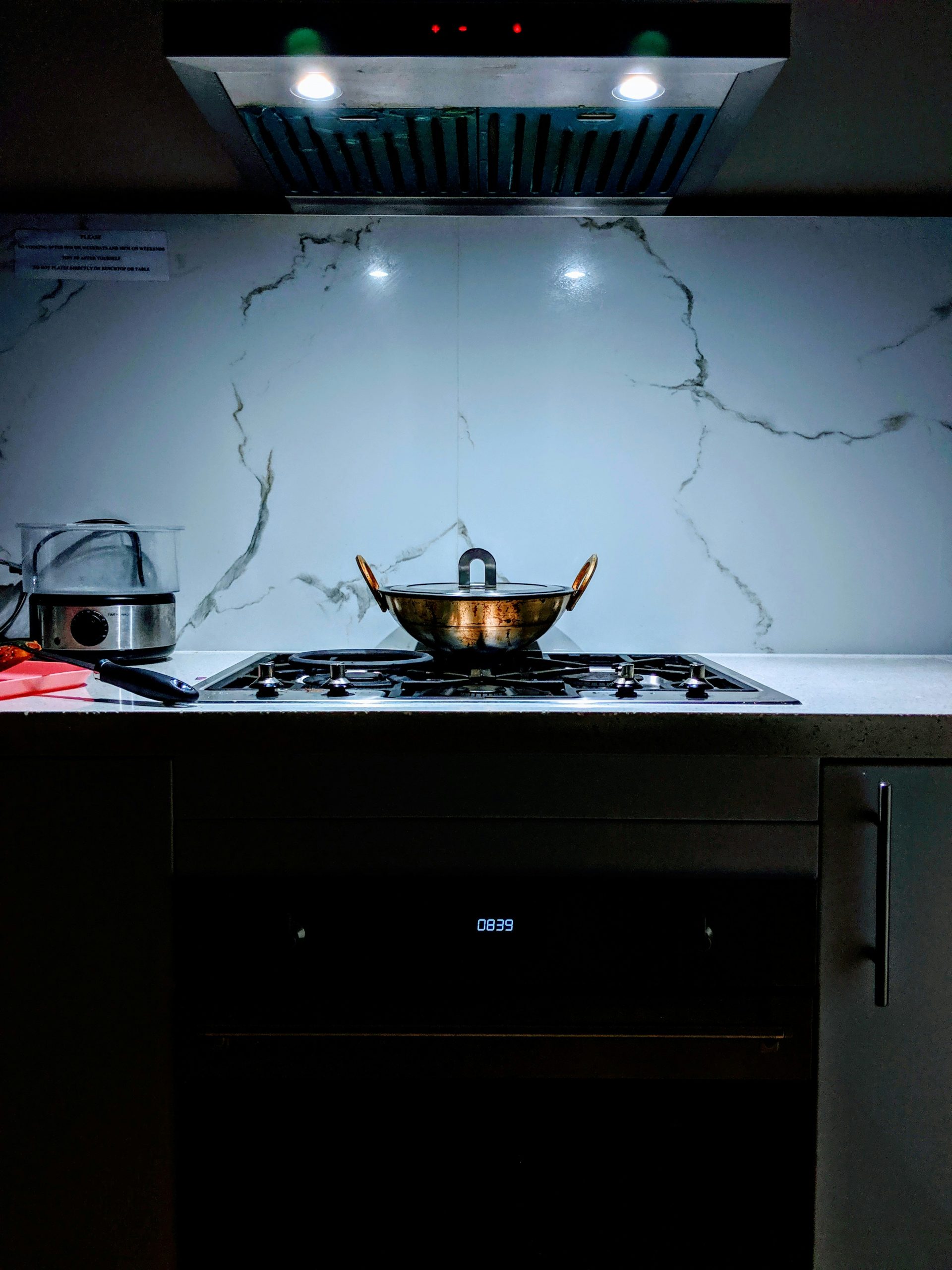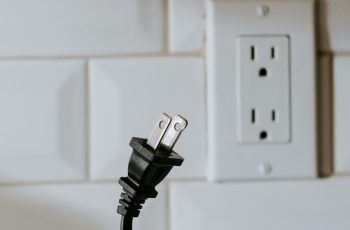Ad Blocker Detected
Our website is made possible by displaying online advertisements to our visitors. Please consider supporting us by disabling your ad blocker.
Are you ready to take your cooking skills to the next level? Look no further than the Beginner’s Guide to Mastering the Electric Pressure Cooker. Whether you’re a seasoned chef or just starting out in the kitchen, this article will provide you with all the tips and tricks you need to become a pro at using this versatile appliance. From understanding the fundamentals of pressure cooking to mastering the art of creating delicious meals in record time, this guide has got you covered. Get ready to revolutionize your cooking experience with the electric pressure cooker.

Understanding Electric Pressure Cookers
What is an electric pressure cooker?
An electric pressure cooker is a kitchen appliance that uses steam pressure to cook food quickly and efficiently. It is a modern, user-friendly version of the traditional stovetop pressure cooker. With the ability to cook a wide range of dishes, from soups and stews to meats and even desserts, electric pressure cookers have gained popularity among home cooks.
How does an electric pressure cooker work?
Electric pressure cookers work by creating a sealed environment where pressure builds up as liquid inside the pot boils. The tight seal and high pressure allow food to cook faster than traditional methods. The heat and pressure generated help to tenderize tough cuts of meat and enhance flavors. Electric pressure cookers typically have a built-in heating element and are programmable, making it easy to set the desired cooking time and pressure level.
Benefits of using an electric pressure cooker
There are several benefits to using an electric pressure cooker. Firstly, it saves time by drastically reducing cooking time. Meals that would normally take hours to cook can be ready in just a fraction of the time. Secondly, it retains more nutrients in food compared to other cooking methods. The high-pressure environment prevents vitamins and minerals from being lost during the cooking process. Additionally, electric pressure cookers are energy-efficient and can save you money on electricity bills. Lastly, they offer a convenient and hands-off cooking experience. Once you set the desired cooking time and pressure, the cooker takes care of the rest, allowing you to multitask or relax while your meal cooks.
Choosing the Right Electric Pressure Cooker
Considerations before buying
Before purchasing an electric pressure cooker, there are a few key factors to consider. Firstly, think about the size you need. Electric pressure cookers come in various sizes, ranging from as small as 3 quarts to as large as 8 quarts. Choose a size that suits your family’s needs and the dishes you plan to cook. Secondly, consider the build quality and durability of the cooker. Look for models made from stainless steel, as they tend to be more durable and resistant to staining. Finally, think about the available features and functions. Some cookers offer additional features like delayed start, keep warm function, or specific cooking presets.
Different types of electric pressure cookers
There are two main types of electric pressure cookers: stovetop-style and standalone. Stovetop-style electric pressure cookers are designed to sit on a stovetop burner and use the stove’s heat as the primary source of energy. Standalone electric pressure cookers have their own heating element and can be used anywhere with an electrical outlet. Both types have their pros and cons, so it’s important to choose one that suits your cooking style and kitchen setup.
Features to look for in an electric pressure cooker
When choosing an electric pressure cooker, there are a few features to keep in mind. Firstly, look for a cooker with a user-friendly control panel. It should have clearly labeled buttons and an intuitive interface. Secondly, consider the availability of cooking presets. These pre-programmed settings make it easy to cook specific dishes, such as rice, soup, or yogurt, with just the touch of a button. Additionally, look for a cooker with a digital display that shows the cooking time and pressure level. This makes it easier to monitor the progress of your cooking. Lastly, consider the safety features of the cooker, such as lid-locking mechanisms and pressure release valves, to ensure safe and worry-free cooking.
Getting Started with Your Electric Pressure Cooker
Reading the user manual
Before using your electric pressure cooker, it’s essential to read the user manual thoroughly. The manual provides valuable information on how to assemble, operate, and maintain your specific model. It also includes important safety guidelines and troubleshooting tips. Take the time to familiarize yourself with the functions and features of your cooker to ensure successful and safe cooking.
Safety precautions
Electric pressure cookers operate under high pressure and can be potentially dangerous if not used correctly. It’s important to take some safety precautions before using your cooker. Firstly, always ensure that the sealing ring is properly seated and in good condition before cooking. A faulty or worn-out sealing ring can cause pressure leaks. Secondly, be cautious when releasing steam. Never touch the steam release valve directly with your hand to avoid burns. Instead, use a long utensil or wear heat-resistant gloves to release steam safely. Lastly, always unplug the cooker from the power source when it’s not in use and never immerse the cooker or its base in water.
Assembling the electric pressure cooker
Assembling an electric pressure cooker is a straightforward process. Start by placing the cooking pot into the cooker’s housing and ensure it is securely in place. Next, attach the lid to the pot, making sure it is properly aligned and locked in position. Some cookers have a pressure release valve that needs to be inserted or twisted into place. Finally, plug in the cooker and you’re ready to start cooking. It’s important to follow the specific assembly instructions provided in your user manual, as different models may have slight variations in the assembly process.
Essential Tools and Accessories
Types of pans and inserts
To maximize the versatility of your electric pressure cooker, it’s useful to have different types of pans and inserts. The most common insert is a stainless steel cooking pot, which is included with most electric pressure cookers. This pot is suitable for cooking a wide range of dishes, from soups and stews to pastas and grains. Silicone and glass inserts are also available, which are ideal for baking or cooking delicate dishes. Additionally, having a steamer basket or trivet allows you to steam vegetables or cook multiple ingredients at once.
Additional tools for electric pressure cooking
In addition to pans and inserts, there are a few additional tools that can enhance your electric pressure cooking experience. A long-handled utensil, such as tongs or a ladle, is useful for safely removing hot food from the cooker. A heat-resistant measuring cup is handy for accurately measuring liquids. A silicone or wooden spoon can help you stir ingredients or scrape the bottom of the pot without scratching the non-stick surface. Lastly, an instant-read food thermometer is useful for checking the internal temperature of meats and poultry to ensure they are cooked properly.
Recommended accessories for convenience
There are several accessories available that can make electric pressure cooking more convenient. A spare sealing ring is always a good idea to have on hand, as the seal can wear out over time and may need to be replaced. A glass lid can be useful when using the cooker as a slow cooker or for keeping food warm. Silicone molds can be used for making individual-sized portions of desserts or freezing leftovers. If you plan to transport your cooked dishes, a carrying bag designed specifically for electric pressure cookers can be a handy accessory.

Basic Electric Pressure Cooking Techniques
Setting the right pressure level
An important aspect of electric pressure cooking is setting the right pressure level for your recipes. Most electric pressure cookers offer two pressure options: high pressure and low pressure. High pressure is ideal for cooking tough cuts of meat or dishes that require a shorter cooking time, while low pressure is better for delicate ingredients or dishes that need a longer cooking time. It’s important to follow recipe instructions or general guidelines to determine the appropriate pressure level for your specific dish.
Understanding cooking times
Cooking times can vary depending on the recipe and the type of ingredients you are using. Electric pressure cookers typically provide a cooking time chart or guide in the user manual, which can serve as a helpful reference. It’s important to note that the cooking time listed in a recipe may not include the time it takes for the cooker to come to pressure or release pressure naturally. These additional times should be considered when planning your meal. As you gain more experience with your electric pressure cooker, you’ll become more familiar with the cooking times required for different dishes.
Using the cooking presets and functions
Most electric pressure cookers come with pre-programmed cooking presets and functions that take the guesswork out of cooking certain dishes. These presets are designed to automatically set the cooking time and pressure level for specific recipes, such as rice, soup, or yogurt. Simply select the desired preset and let the cooker do the work for you. Some cookers also offer additional functions like sautéing, browning, or slow cooking, which further expand the versatility of the appliance. Experimenting with these presets and functions can help you discover new recipes and cooking techniques.
Mastering Common Electric Pressure Cooker Recipes
Cooking grains and legumes
One of the advantages of using an electric pressure cooker is the ability to quickly and perfectly cook grains and legumes. Rice, quinoa, lentils, and beans can all be cooked in a fraction of the time it would take on the stovetop. To cook grains, simply add the desired amount of water or broth, close the lid, and set the cooking time according to the type of grain. For legumes, it’s best to soak them beforehand to reduce cooking time and enhance digestibility. Adjust the cooking time based on the type and quantity of legume you are using.
Making soups and stews
Electric pressure cookers are perfect for making flavorful soups and stews. The high-pressure environment allows flavors to develop quickly, resulting in rich and satisfying dishes. To make a soup or stew, start by sautéing aromatics like onions and garlic in the cooker. Then, add your choice of protein, vegetables, and broth or stock. Close the lid, set the cooking time, and let the pressure cooker work its magic. The result will be a delicious and hearty soup or stew in a fraction of the time it would take on the stovetop.
Preparing meats and poultry
Electric pressure cookers excel at cooking tough cuts of meat and poultry, transforming them into tender and flavorful dishes. To achieve succulent meats, start by searing the meat on the sauté function to lock in the juices and develop a nice crust. Then, add liquid, such as broth or marinade, and any additional seasonings or vegetables. Close the lid, set the appropriate cooking time based on the type and quantity of meat, and let the pressure cooker work its magic. The result will be fork-tender meat that falls apart effortlessly.
Steam cooking vegetables and seafood
Steaming vegetables and seafood in an electric pressure cooker is a quick and healthy way to prepare these ingredients. Place a steamer basket or trivet inside the cooker, add water or broth for steam, and place the vegetables or seafood on top. Close the lid, set the cooking time according to the specific ingredient, and let the pressure cooker steam them to perfection. The result will be tender and vibrant vegetables or perfectly cooked seafood without the need for excessive oil or butter.

Troubleshooting Tips for Electric Pressure Cooking
Understanding error codes
Electric pressure cookers are equipped with safety features that can trigger error codes to alert you of potential issues. These error codes can vary depending on the manufacturer and model of your cooker. If you encounter an error code, consult the user manual for specific instructions on how to resolve the issue. Common error codes may indicate problems like overheating, insufficient liquid, or incorrect assembly. Understanding these error codes and their corresponding solutions will help you troubleshoot and fix any issues you encounter during cooking.
Dealing with steam release issues
Steam release is a critical aspect of electric pressure cooking. It allows the pressure inside the cooker to dissipate, which is necessary before opening the lid. If you experience issues with steam release, first check that the steam release valve is not clogged or blocked. Clean it thoroughly and ensure it moves freely. If you still encounter problems, it may indicate a faulty valve that needs to be replaced. It’s important to resolve any steam release issues promptly to ensure safe and efficient pressure cooking.
Troubleshooting cooking problems
If you encounter any cooking problems, such as undercooking or overcooking food, it’s essential to identify the root cause and make adjustments for future cooking. Ensure that you are using the correct cooking times and pressure levels according to the recipe or cooking guidelines. If food is consistently undercooked, it may be due to insufficient liquid or incorrect sealing of the cooker. If food is consistently overcooked, it may be a result of excessive cooking times or too high pressure levels. Adjusting these factors and fine-tuning your cooking techniques will help you achieve consistent and satisfactory results.
Care and Maintenance of Your Electric Pressure Cooker
Cleaning the electric pressure cooker
Proper cleaning and maintenance of your electric pressure cooker ensure its longevity and optimal performance. Most electric pressure cookers have removable cooking pots and lids, making them easy to clean. The cooking pot and accessories can usually be cleaned in the dishwasher or with warm soapy water. The exterior of the cooker can be wiped with a damp cloth. It’s important to check the user manual for specific cleaning instructions, as some models may have certain parts that are not dishwasher safe or require special care.
Regular maintenance and inspections
Regular maintenance and inspections are important to ensure that your electric pressure cooker is functioning properly and safely. Check the sealing ring regularly for wear and tear, as a damaged ring can affect the cooker’s performance. Clean the steam release valve and other removable parts regularly to prevent clogs or residue buildup. Inspect the exterior of the cooker for any signs of damage, such as cracks or dents. If you notice any issues or abnormalities, consult the user manual or contact the manufacturer for further guidance.
Replacing parts and accessories
Over time, certain parts and accessories of your electric pressure cooker may need to be replaced. The sealing ring is one of the most commonly replaced parts, as it can wear out or become discolored. It’s recommended to replace the sealing ring every 6 to 12 months or as needed. Other parts that may need replacing include the steam release valve, trivet, or silicone gasket. It’s important to use genuine replacement parts to ensure compatibility and safety. Consult the user manual or contact the manufacturer for information on purchasing and replacing specific parts and accessories.
Popular Electric Pressure Cooker Recipes for Beginners
Easy one-pot meals
One of the most popular types of recipes for electric pressure cookers is easy one-pot meals. These recipes typically involve combining protein, grains or pasta, vegetables, and liquid into the cooker and letting it do the rest. Some popular one-pot meals include chili, curry, pasta with meatballs, and risotto. The beauty of these recipes is that everything cooks together, resulting in flavorful and satisfying meals with minimal effort and cleanup.
Quick and healthy recipes
Electric pressure cookers are perfect for quick and healthy meals. Recipes like steamed fish with vegetables, chicken and vegetable stir-fry, or quinoa salad can all be prepared in a matter of minutes. The high-pressure environment helps to retain nutrients and flavors, making these dishes not only convenient but also nutritious. With some basic ingredients and a little creativity, you can whip up a delicious and nutritious meal in no time.
Desserts and sweet treats
Electric pressure cookers are not only for savory dishes but also for making mouthwatering desserts and sweet treats. From cheesecake and bread pudding to lava cakes and rice pudding, there is a wide range of dessert recipes that can be made in an electric pressure cooker. The steam and pressure create a moist and tender texture, resulting in delectable desserts that are sure to impress your family and friends.
Advanced Electric Pressure Cooking Techniques
Pressure canning
Pressure canning is a technique that involves using an electric pressure cooker to preserve food in jars at high temperatures. This method allows you to safely store homemade sauces, jams, pickles, and more for extended periods. It’s important to use canning-specific recipes and follow proper canning procedures to ensure food safety. Consult reliable sources or specialized canning guides for detailed instructions on pressure canning with electric pressure cookers.
Sous vide cooking
Sous vide cooking is a precise cooking method that involves vacuum-sealing food in a bag and cooking it in a temperature-controlled water bath. Some electric pressure cookers offer sous vide functionality, allowing you to achieve restaurant-quality results at home. This technique is particularly popular for cooking meats, as it ensures even cooking and precise control over doneness. Follow sous vide recipes and guidelines to ensure food safety and optimal results.
Pressure frying
Pressure frying is a cooking technique that combines pressure cooking and frying. Electric pressure cookers equipped with a pressure frying function can be used to achieve crispy and juicy fried foods. This method allows for faster cooking times and helps to seal the flavors inside the food. It’s important to follow specific pressure frying recipes and guidelines to ensure safety and minimize oil splatter.
Other creative uses for electric pressure cookers
In addition to the traditional cooking techniques, electric pressure cookers offer endless possibilities for creative cooking. From making homemade yogurt and proofing bread dough to brewing herbal infusions and canning homemade stocks and broths, the versatility of electric pressure cookers allows you to explore new culinary adventures. A quick search online or in dedicated pressure cooker cookbooks will provide you with a wealth of innovative recipes and ideas to try with your electric pressure cooker.

